Driving Business Success with Full-Service Digital Marketing Solutions
Driving Business Success with Full-Service Digital Marketing Solutions
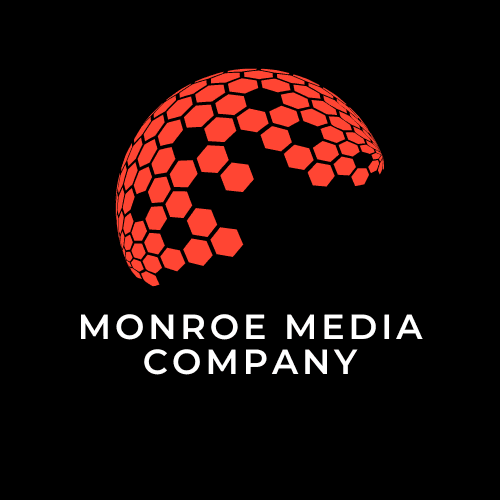


Unlock the Power of Digital Marketing with Insights on SEO, Web Design, and Paid Ads
Unlock the Power of Digital Marketing with Insights on SEO, Web Design, and Paid Ads
Unlock the Power of Digital Marketing with Insights on SEO, Web Design, and Paid Ads
In this post:
In this post:
In this post:
Section
Section
Section
In today’s hyperconnected world, it feels like there’s always a new tool, social platform, or tactic emerging, each promising to revolutionize your business. But real transformation doesn’t come from hopping on every trend—it comes from using strategies that build meaningful, long-term relationships with customers. At its core, this is what digital marketing is all about: creating sustainable growth by meeting people where they are, and offering value at every stage of their journey.
At Monroe Media Company, we see digital marketing as a finely tuned symphony, where each instrument plays its part to create a seamless experience. Whether it’s web design, SEO, or paid ads, all elements need to work together. But instead of focusing on us, let’s explore how these digital marketing tactics work individually and in unison to drive results.
Digital Marketing: More Than Just Ads and Emails
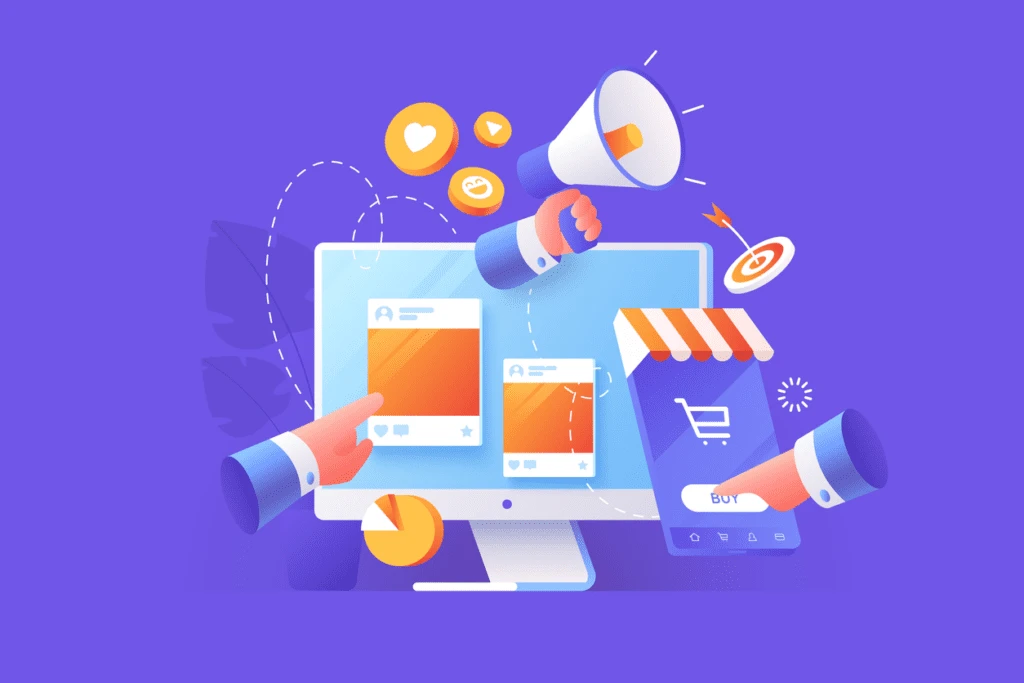
Too often, digital marketing gets boiled down to running ads or sending email campaigns. While these are critical elements, they only scratch the surface of what a well-rounded marketing strategy can do. In reality, digital marketing is a blend of techniques aimed at reaching, engaging, and nurturing customers at every touchpoint.
Here’s an analogy: think of your marketing efforts as a conversation. Imagine meeting a potential customer for the first time. If you immediately start talking about your products, chances are the conversation won’t last long. Instead, you’d begin by learning more about them—what they’re interested in, what problems they’re facing—and only then would you introduce how your business could help.
Digital marketing works the same way. It’s not about shouting your message from the rooftops; it’s about listening to your audience, understanding their needs, and delivering solutions when the time is right. This is where tools like SEO, targeted content, and paid ads come into play, working together to build trust, raise brand awareness, and, eventually, drive conversions.
The Importance of Web Design in Digital Marketing

Imagine walking into a store with a broken front door and dim lighting. You’d probably turn around and leave, right? Your website functions in much the same way. It’s the digital storefront for your business, and web design plays a crucial role in shaping visitors' first impressions.
When someone lands on your site, you only have a few seconds to capture their attention. If your site is slow, confusing to navigate, or poorly designed, visitors won’t hesitate to click away. On the flip side, a well-designed website can guide users through a carefully thought-out journey, from learning about your brand to making a purchase.
Good web design isn’t just about aesthetics—it’s about functionality. It ensures that visitors can easily find what they’re looking for, whether that’s information about your services, customer testimonials, or a contact form. And with more users browsing the web on mobile devices than ever before, it’s critical that your site is responsive and works flawlessly on any screen size.
Additionally, your web design directly impacts your SEO. Google’s algorithms consider factors like page load speed, mobile-friendliness, and site structure when ranking websites. If your site doesn’t meet these criteria, your search rankings will suffer, making it harder for potential customers to find you.
SEO: Your Secret Weapon for Organic Growth
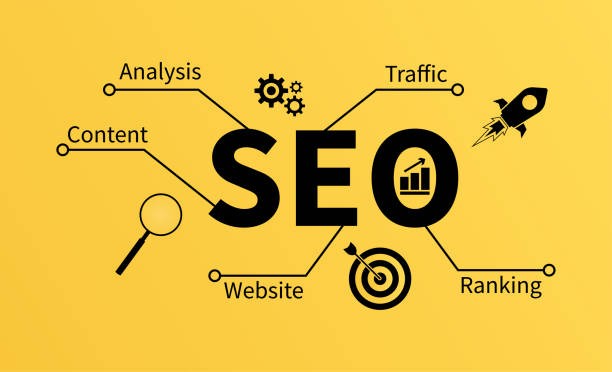
Once your website is optimized and ready to go, the next step is making sure people can find it. This is where search engine optimization (SEO) comes in. At its core, SEO is about ensuring that your website shows up at the top of search engine results when people type in relevant keywords.
Unlike paid advertising, which offers immediate visibility, SEO is a long-term investment that builds organic traffic. Think of it like planting a tree: the work you put in today—whether it’s keyword research, creating high-quality content, or building backlinks—pays off months or even years down the line as your search rankings improve.
Here are the three main pillars of SEO:
On-Page SEO: This involves optimizing the content and HTML source code of your website’s individual pages to help search engines understand what your site is about. This includes everything from using the right meta descriptions to ensuring your keywords are strategically placed throughout your content.
Off-Page SEO: This refers to actions taken outside of your own website to impact your rankings. The most important off-page SEO factor is building backlinks—when other reputable websites link to your content. Backlinks serve as a vote of confidence, signaling to search engines that your content is valuable and trustworthy.
Technical SEO: This involves optimizing your site’s backend to make it easier for search engines to crawl and index your pages. Technical SEO includes improving site speed, setting up proper redirects, fixing broken links, and creating XML sitemaps. It’s the foundation that supports your on-page and off-page SEO efforts.
The key to effective SEO is to remember that search engines, particularly Google, are constantly evolving. What worked last year might not work today, so staying up-to-date with algorithm changes and refining your strategy is crucial.
Paid Ads: The Fast Track to Visibility
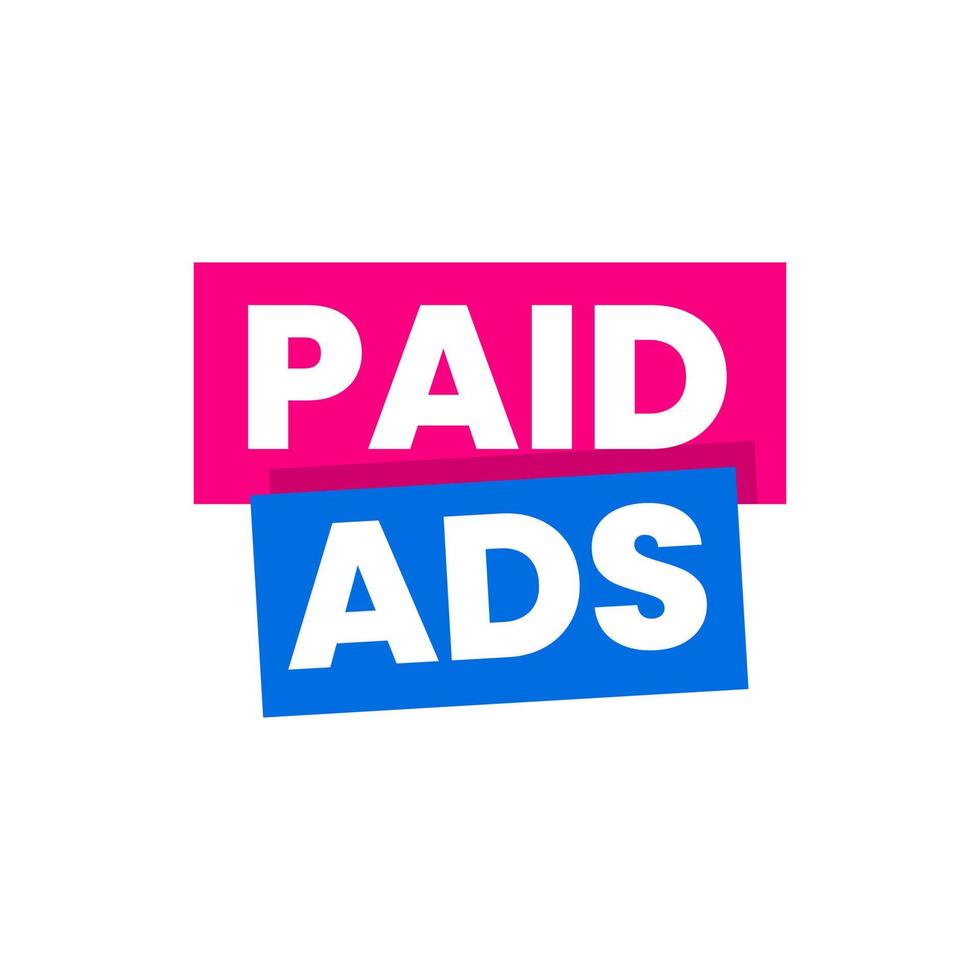
While SEO is essential for long-term growth, sometimes you need quicker results. That’s where paid ads come in. Whether through Google Ads, Facebook Ads, or Instagram, paid advertising allows you to reach your target audience almost instantly.
But simply throwing money at an ad campaign won’t guarantee success. The key to effective paid advertising lies in creating targeted campaigns that deliver the right message to the right people at the right time. With PPC (pay-per-click) ads, for example, you only pay when someone clicks on your ad, so it’s crucial to craft compelling ad copy and optimize your landing pages to convert visitors once they arrive on your site.
Here’s why paid ads are a powerful addition to your digital marketing toolkit:
Immediate Visibility: Unlike SEO, which can take months to see significant results, paid ads put your business in front of potential customers immediately.
Precise Targeting: Platforms like Google and Facebook offer highly specific targeting options, allowing you to show your ads to people based on demographics, interests, and behaviors.
Measurable ROI: One of the biggest advantages of digital ads is their measurability. You can track how many people clicked your ad, visited your site, or made a purchase, allowing you to adjust your campaigns based on performance.
And don’t forget about remarketing—showing ads to people who have already interacted with your brand but haven’t converted yet. This keeps your business top of mind and encourages users to return and complete their purchase.
Full-Funnel Marketing: Nurturing Leads at Every Stage

A key mistake many businesses make is thinking that digital marketing ends once a potential customer visits their website. But in reality, getting them there is just the beginning. It’s what you do afterward that often determines whether they’ll convert.
This is where full-funnel marketing comes into play. A full-funnel approach targets users at every stage of the buyer’s journey, from the moment they first hear about your brand to the point where they’re ready to make a purchase—and even beyond that.
Let’s break down the funnel into three stages:
Top of the Funnel (TOFU): At this stage, users are in the awareness phase. They’re researching solutions to a problem but may not even know that your business exists. At TOFU, your goal is to attract attention and educate potential customers about your industry or product through blog posts, social media, and SEO-optimized content.
Middle of the Funnel (MOFU): Now, users are aware of your business and are considering their options. They might still be exploring other solutions, so your focus at this stage should be to nurture leads with deeper content like case studies, white papers, or email newsletters. This is also where remarketing can be particularly effective, bringing users back to your site.
Bottom of the Funnel (BOFU): At this stage, leads are ready to make a decision. Your goal is to make it easy for them to convert by offering clear calls to action, testimonials, product demos, or discounts.
The beauty of full-funnel marketing is that it ensures you’re not only attracting visitors but also guiding them through a journey that leads to conversions and, ideally, repeat business.
Why Data and Analytics Matter
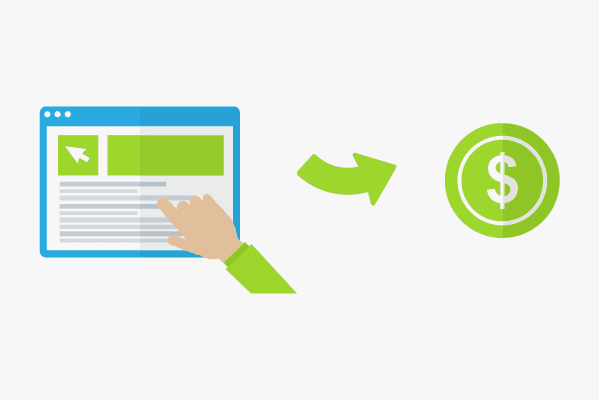
One of the biggest advantages of digital marketing is that it’s measurable. Unlike traditional forms of advertising, where it’s difficult to track the return on investment, digital marketing allows you to monitor performance in real time.
Using tools like Google Analytics or social media insights, you can track everything from how many people visited your website to how many clicked on your ad or filled out a contact form. You can even set up specific conversion goals to see how well different parts of your website are performing.
Here are some of the key metrics you’ll want to monitor:
Conversion Rate: The percentage of visitors who take a desired action, such as making a purchase or filling out a contact form.
Bounce Rate: The percentage of visitors who leave your site without taking any action. A high bounce rate can indicate that your site’s content or user experience isn’t meeting expectations.
Cost-per-Click (CPC): The average amount you pay for each click on a PPC ad. Monitoring your CPC can help you optimize your ad budget and maximize ROI.
By analyzing these metrics, you can continuously optimize your campaigns and improve your digital marketing efforts over time.
The Ever-Evolving Journey of Digital Marketing
Digital marketing is not a one-and-done effort. It’s an ever-evolving journey that requires regular monitoring, testing, and optimization. As new tools, platforms, and technologies emerge, staying ahead of the curve is essential to keep your business growing.
At its heart, digital marketing is about building relationships—relationships that are built on trust, value, and consistency. Whether through SEO, web design, paid ads, or a combination of all three, your goal should always be to meet your audience where they are and offer solutions to their problems.
For more insights on how to improve your digital presence, visit our home page to see how Monroe Media Company can help guide your business to success.
In today’s hyperconnected world, it feels like there’s always a new tool, social platform, or tactic emerging, each promising to revolutionize your business. But real transformation doesn’t come from hopping on every trend—it comes from using strategies that build meaningful, long-term relationships with customers. At its core, this is what digital marketing is all about: creating sustainable growth by meeting people where they are, and offering value at every stage of their journey.
At Monroe Media Company, we see digital marketing as a finely tuned symphony, where each instrument plays its part to create a seamless experience. Whether it’s web design, SEO, or paid ads, all elements need to work together. But instead of focusing on us, let’s explore how these digital marketing tactics work individually and in unison to drive results.
Digital Marketing: More Than Just Ads and Emails

Too often, digital marketing gets boiled down to running ads or sending email campaigns. While these are critical elements, they only scratch the surface of what a well-rounded marketing strategy can do. In reality, digital marketing is a blend of techniques aimed at reaching, engaging, and nurturing customers at every touchpoint.
Here’s an analogy: think of your marketing efforts as a conversation. Imagine meeting a potential customer for the first time. If you immediately start talking about your products, chances are the conversation won’t last long. Instead, you’d begin by learning more about them—what they’re interested in, what problems they’re facing—and only then would you introduce how your business could help.
Digital marketing works the same way. It’s not about shouting your message from the rooftops; it’s about listening to your audience, understanding their needs, and delivering solutions when the time is right. This is where tools like SEO, targeted content, and paid ads come into play, working together to build trust, raise brand awareness, and, eventually, drive conversions.
The Importance of Web Design in Digital Marketing

Imagine walking into a store with a broken front door and dim lighting. You’d probably turn around and leave, right? Your website functions in much the same way. It’s the digital storefront for your business, and web design plays a crucial role in shaping visitors' first impressions.
When someone lands on your site, you only have a few seconds to capture their attention. If your site is slow, confusing to navigate, or poorly designed, visitors won’t hesitate to click away. On the flip side, a well-designed website can guide users through a carefully thought-out journey, from learning about your brand to making a purchase.
Good web design isn’t just about aesthetics—it’s about functionality. It ensures that visitors can easily find what they’re looking for, whether that’s information about your services, customer testimonials, or a contact form. And with more users browsing the web on mobile devices than ever before, it’s critical that your site is responsive and works flawlessly on any screen size.
Additionally, your web design directly impacts your SEO. Google’s algorithms consider factors like page load speed, mobile-friendliness, and site structure when ranking websites. If your site doesn’t meet these criteria, your search rankings will suffer, making it harder for potential customers to find you.
SEO: Your Secret Weapon for Organic Growth

Once your website is optimized and ready to go, the next step is making sure people can find it. This is where search engine optimization (SEO) comes in. At its core, SEO is about ensuring that your website shows up at the top of search engine results when people type in relevant keywords.
Unlike paid advertising, which offers immediate visibility, SEO is a long-term investment that builds organic traffic. Think of it like planting a tree: the work you put in today—whether it’s keyword research, creating high-quality content, or building backlinks—pays off months or even years down the line as your search rankings improve.
Here are the three main pillars of SEO:
On-Page SEO: This involves optimizing the content and HTML source code of your website’s individual pages to help search engines understand what your site is about. This includes everything from using the right meta descriptions to ensuring your keywords are strategically placed throughout your content.
Off-Page SEO: This refers to actions taken outside of your own website to impact your rankings. The most important off-page SEO factor is building backlinks—when other reputable websites link to your content. Backlinks serve as a vote of confidence, signaling to search engines that your content is valuable and trustworthy.
Technical SEO: This involves optimizing your site’s backend to make it easier for search engines to crawl and index your pages. Technical SEO includes improving site speed, setting up proper redirects, fixing broken links, and creating XML sitemaps. It’s the foundation that supports your on-page and off-page SEO efforts.
The key to effective SEO is to remember that search engines, particularly Google, are constantly evolving. What worked last year might not work today, so staying up-to-date with algorithm changes and refining your strategy is crucial.
Paid Ads: The Fast Track to Visibility

While SEO is essential for long-term growth, sometimes you need quicker results. That’s where paid ads come in. Whether through Google Ads, Facebook Ads, or Instagram, paid advertising allows you to reach your target audience almost instantly.
But simply throwing money at an ad campaign won’t guarantee success. The key to effective paid advertising lies in creating targeted campaigns that deliver the right message to the right people at the right time. With PPC (pay-per-click) ads, for example, you only pay when someone clicks on your ad, so it’s crucial to craft compelling ad copy and optimize your landing pages to convert visitors once they arrive on your site.
Here’s why paid ads are a powerful addition to your digital marketing toolkit:
Immediate Visibility: Unlike SEO, which can take months to see significant results, paid ads put your business in front of potential customers immediately.
Precise Targeting: Platforms like Google and Facebook offer highly specific targeting options, allowing you to show your ads to people based on demographics, interests, and behaviors.
Measurable ROI: One of the biggest advantages of digital ads is their measurability. You can track how many people clicked your ad, visited your site, or made a purchase, allowing you to adjust your campaigns based on performance.
And don’t forget about remarketing—showing ads to people who have already interacted with your brand but haven’t converted yet. This keeps your business top of mind and encourages users to return and complete their purchase.
Full-Funnel Marketing: Nurturing Leads at Every Stage

A key mistake many businesses make is thinking that digital marketing ends once a potential customer visits their website. But in reality, getting them there is just the beginning. It’s what you do afterward that often determines whether they’ll convert.
This is where full-funnel marketing comes into play. A full-funnel approach targets users at every stage of the buyer’s journey, from the moment they first hear about your brand to the point where they’re ready to make a purchase—and even beyond that.
Let’s break down the funnel into three stages:
Top of the Funnel (TOFU): At this stage, users are in the awareness phase. They’re researching solutions to a problem but may not even know that your business exists. At TOFU, your goal is to attract attention and educate potential customers about your industry or product through blog posts, social media, and SEO-optimized content.
Middle of the Funnel (MOFU): Now, users are aware of your business and are considering their options. They might still be exploring other solutions, so your focus at this stage should be to nurture leads with deeper content like case studies, white papers, or email newsletters. This is also where remarketing can be particularly effective, bringing users back to your site.
Bottom of the Funnel (BOFU): At this stage, leads are ready to make a decision. Your goal is to make it easy for them to convert by offering clear calls to action, testimonials, product demos, or discounts.
The beauty of full-funnel marketing is that it ensures you’re not only attracting visitors but also guiding them through a journey that leads to conversions and, ideally, repeat business.
Why Data and Analytics Matter

One of the biggest advantages of digital marketing is that it’s measurable. Unlike traditional forms of advertising, where it’s difficult to track the return on investment, digital marketing allows you to monitor performance in real time.
Using tools like Google Analytics or social media insights, you can track everything from how many people visited your website to how many clicked on your ad or filled out a contact form. You can even set up specific conversion goals to see how well different parts of your website are performing.
Here are some of the key metrics you’ll want to monitor:
Conversion Rate: The percentage of visitors who take a desired action, such as making a purchase or filling out a contact form.
Bounce Rate: The percentage of visitors who leave your site without taking any action. A high bounce rate can indicate that your site’s content or user experience isn’t meeting expectations.
Cost-per-Click (CPC): The average amount you pay for each click on a PPC ad. Monitoring your CPC can help you optimize your ad budget and maximize ROI.
By analyzing these metrics, you can continuously optimize your campaigns and improve your digital marketing efforts over time.
The Ever-Evolving Journey of Digital Marketing
Digital marketing is not a one-and-done effort. It’s an ever-evolving journey that requires regular monitoring, testing, and optimization. As new tools, platforms, and technologies emerge, staying ahead of the curve is essential to keep your business growing.
At its heart, digital marketing is about building relationships—relationships that are built on trust, value, and consistency. Whether through SEO, web design, paid ads, or a combination of all three, your goal should always be to meet your audience where they are and offer solutions to their problems.
For more insights on how to improve your digital presence, visit our home page to see how Monroe Media Company can help guide your business to success.
In today’s hyperconnected world, it feels like there’s always a new tool, social platform, or tactic emerging, each promising to revolutionize your business. But real transformation doesn’t come from hopping on every trend—it comes from using strategies that build meaningful, long-term relationships with customers. At its core, this is what digital marketing is all about: creating sustainable growth by meeting people where they are, and offering value at every stage of their journey.
At Monroe Media Company, we see digital marketing as a finely tuned symphony, where each instrument plays its part to create a seamless experience. Whether it’s web design, SEO, or paid ads, all elements need to work together. But instead of focusing on us, let’s explore how these digital marketing tactics work individually and in unison to drive results.
Digital Marketing: More Than Just Ads and Emails

Too often, digital marketing gets boiled down to running ads or sending email campaigns. While these are critical elements, they only scratch the surface of what a well-rounded marketing strategy can do. In reality, digital marketing is a blend of techniques aimed at reaching, engaging, and nurturing customers at every touchpoint.
Here’s an analogy: think of your marketing efforts as a conversation. Imagine meeting a potential customer for the first time. If you immediately start talking about your products, chances are the conversation won’t last long. Instead, you’d begin by learning more about them—what they’re interested in, what problems they’re facing—and only then would you introduce how your business could help.
Digital marketing works the same way. It’s not about shouting your message from the rooftops; it’s about listening to your audience, understanding their needs, and delivering solutions when the time is right. This is where tools like SEO, targeted content, and paid ads come into play, working together to build trust, raise brand awareness, and, eventually, drive conversions.
The Importance of Web Design in Digital Marketing

Imagine walking into a store with a broken front door and dim lighting. You’d probably turn around and leave, right? Your website functions in much the same way. It’s the digital storefront for your business, and web design plays a crucial role in shaping visitors' first impressions.
When someone lands on your site, you only have a few seconds to capture their attention. If your site is slow, confusing to navigate, or poorly designed, visitors won’t hesitate to click away. On the flip side, a well-designed website can guide users through a carefully thought-out journey, from learning about your brand to making a purchase.
Good web design isn’t just about aesthetics—it’s about functionality. It ensures that visitors can easily find what they’re looking for, whether that’s information about your services, customer testimonials, or a contact form. And with more users browsing the web on mobile devices than ever before, it’s critical that your site is responsive and works flawlessly on any screen size.
Additionally, your web design directly impacts your SEO. Google’s algorithms consider factors like page load speed, mobile-friendliness, and site structure when ranking websites. If your site doesn’t meet these criteria, your search rankings will suffer, making it harder for potential customers to find you.
SEO: Your Secret Weapon for Organic Growth

Once your website is optimized and ready to go, the next step is making sure people can find it. This is where search engine optimization (SEO) comes in. At its core, SEO is about ensuring that your website shows up at the top of search engine results when people type in relevant keywords.
Unlike paid advertising, which offers immediate visibility, SEO is a long-term investment that builds organic traffic. Think of it like planting a tree: the work you put in today—whether it’s keyword research, creating high-quality content, or building backlinks—pays off months or even years down the line as your search rankings improve.
Here are the three main pillars of SEO:
On-Page SEO: This involves optimizing the content and HTML source code of your website’s individual pages to help search engines understand what your site is about. This includes everything from using the right meta descriptions to ensuring your keywords are strategically placed throughout your content.
Off-Page SEO: This refers to actions taken outside of your own website to impact your rankings. The most important off-page SEO factor is building backlinks—when other reputable websites link to your content. Backlinks serve as a vote of confidence, signaling to search engines that your content is valuable and trustworthy.
Technical SEO: This involves optimizing your site’s backend to make it easier for search engines to crawl and index your pages. Technical SEO includes improving site speed, setting up proper redirects, fixing broken links, and creating XML sitemaps. It’s the foundation that supports your on-page and off-page SEO efforts.
The key to effective SEO is to remember that search engines, particularly Google, are constantly evolving. What worked last year might not work today, so staying up-to-date with algorithm changes and refining your strategy is crucial.
Paid Ads: The Fast Track to Visibility

While SEO is essential for long-term growth, sometimes you need quicker results. That’s where paid ads come in. Whether through Google Ads, Facebook Ads, or Instagram, paid advertising allows you to reach your target audience almost instantly.
But simply throwing money at an ad campaign won’t guarantee success. The key to effective paid advertising lies in creating targeted campaigns that deliver the right message to the right people at the right time. With PPC (pay-per-click) ads, for example, you only pay when someone clicks on your ad, so it’s crucial to craft compelling ad copy and optimize your landing pages to convert visitors once they arrive on your site.
Here’s why paid ads are a powerful addition to your digital marketing toolkit:
Immediate Visibility: Unlike SEO, which can take months to see significant results, paid ads put your business in front of potential customers immediately.
Precise Targeting: Platforms like Google and Facebook offer highly specific targeting options, allowing you to show your ads to people based on demographics, interests, and behaviors.
Measurable ROI: One of the biggest advantages of digital ads is their measurability. You can track how many people clicked your ad, visited your site, or made a purchase, allowing you to adjust your campaigns based on performance.
And don’t forget about remarketing—showing ads to people who have already interacted with your brand but haven’t converted yet. This keeps your business top of mind and encourages users to return and complete their purchase.
Full-Funnel Marketing: Nurturing Leads at Every Stage

A key mistake many businesses make is thinking that digital marketing ends once a potential customer visits their website. But in reality, getting them there is just the beginning. It’s what you do afterward that often determines whether they’ll convert.
This is where full-funnel marketing comes into play. A full-funnel approach targets users at every stage of the buyer’s journey, from the moment they first hear about your brand to the point where they’re ready to make a purchase—and even beyond that.
Let’s break down the funnel into three stages:
Top of the Funnel (TOFU): At this stage, users are in the awareness phase. They’re researching solutions to a problem but may not even know that your business exists. At TOFU, your goal is to attract attention and educate potential customers about your industry or product through blog posts, social media, and SEO-optimized content.
Middle of the Funnel (MOFU): Now, users are aware of your business and are considering their options. They might still be exploring other solutions, so your focus at this stage should be to nurture leads with deeper content like case studies, white papers, or email newsletters. This is also where remarketing can be particularly effective, bringing users back to your site.
Bottom of the Funnel (BOFU): At this stage, leads are ready to make a decision. Your goal is to make it easy for them to convert by offering clear calls to action, testimonials, product demos, or discounts.
The beauty of full-funnel marketing is that it ensures you’re not only attracting visitors but also guiding them through a journey that leads to conversions and, ideally, repeat business.
Why Data and Analytics Matter

One of the biggest advantages of digital marketing is that it’s measurable. Unlike traditional forms of advertising, where it’s difficult to track the return on investment, digital marketing allows you to monitor performance in real time.
Using tools like Google Analytics or social media insights, you can track everything from how many people visited your website to how many clicked on your ad or filled out a contact form. You can even set up specific conversion goals to see how well different parts of your website are performing.
Here are some of the key metrics you’ll want to monitor:
Conversion Rate: The percentage of visitors who take a desired action, such as making a purchase or filling out a contact form.
Bounce Rate: The percentage of visitors who leave your site without taking any action. A high bounce rate can indicate that your site’s content or user experience isn’t meeting expectations.
Cost-per-Click (CPC): The average amount you pay for each click on a PPC ad. Monitoring your CPC can help you optimize your ad budget and maximize ROI.
By analyzing these metrics, you can continuously optimize your campaigns and improve your digital marketing efforts over time.
The Ever-Evolving Journey of Digital Marketing
Digital marketing is not a one-and-done effort. It’s an ever-evolving journey that requires regular monitoring, testing, and optimization. As new tools, platforms, and technologies emerge, staying ahead of the curve is essential to keep your business growing.
At its heart, digital marketing is about building relationships—relationships that are built on trust, value, and consistency. Whether through SEO, web design, paid ads, or a combination of all three, your goal should always be to meet your audience where they are and offer solutions to their problems.
For more insights on how to improve your digital presence, visit our home page to see how Monroe Media Company can help guide your business to success.
Ready to scale your brand to new heights?
If you want to achieve ground-breaking growth with increased sales and profitability with paid ads, then you're in the right place.
Ready to scale your brand to new heights?
If you want to achieve ground-breaking growth with increased sales and profitability with paid ads, then you're in the right place.
Ready to scale your brand to new heights?
If you want to achieve ground-breaking growth with increased sales and profitability with paid ads, then you're in the right place.
Ready to scale your brand to new heights?
If you want to achieve ground-breaking growth with increased sales and profitability with paid ads, then you're in the right place.